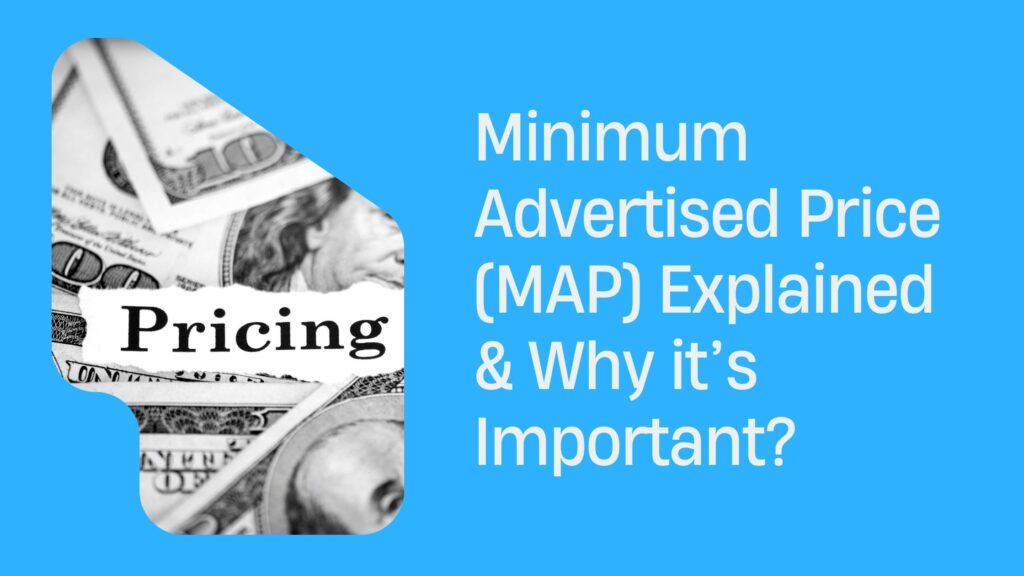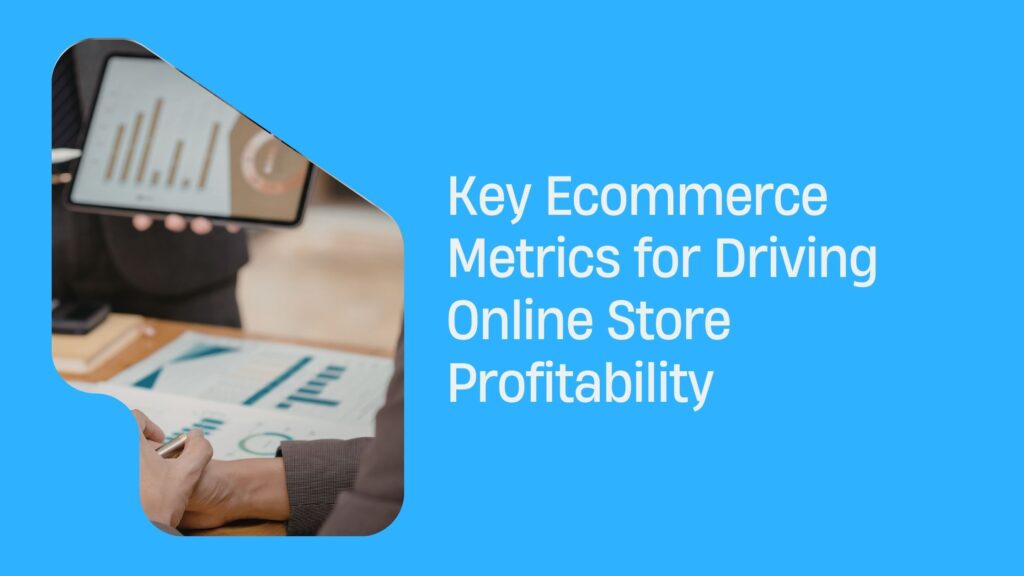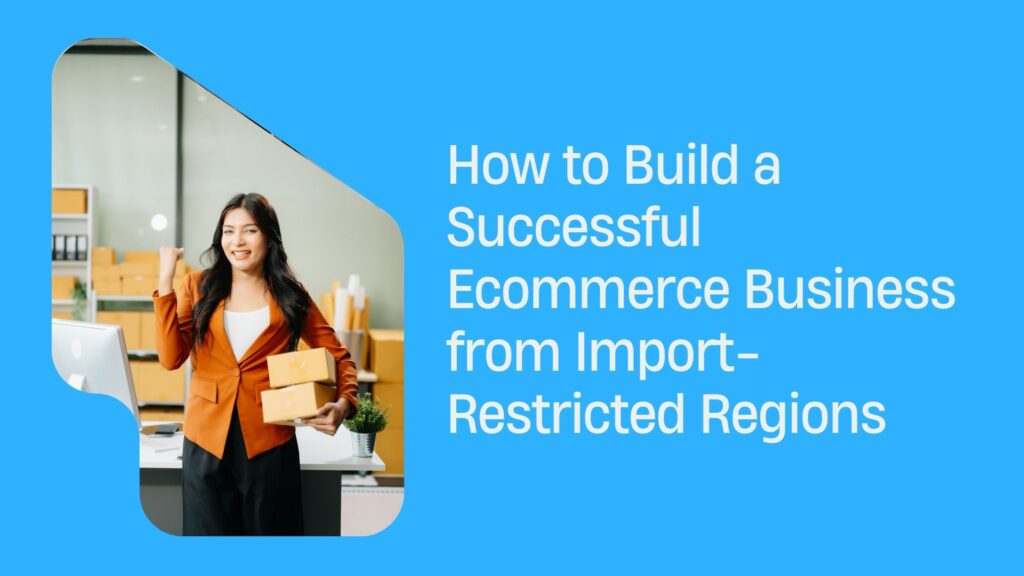Minimum Advertised Price (MAP) Explained & Why it’s Important?
Minimum Advertised Price (MAP) is the lowest price a retailer can publicly display for a product. Businesses use MAP policies to protect brand value, prevent price wars, and maintain fair competition.
MAP pricing protects product value, keeps retailer profits stable, and ensures customers see consistent prices. Knowing MAP pricing helps businesses control their market position while maintaining good retailer relationships.
What is the Minimum Advertised Price (MAP)?
MAP (Minimum Advertised Price) is the lowest price a retailer can publicly show, set by the manufacturer. It prevents price wars and protects brand value. MAP pricing applies to both online and offline stores, ensuring fair competition.
Retailers can sell below MAP privately but can’t advertise it. Enforcing MAP helps maintain profit margins and keeps prices consistent across sales channels.
Key Differences Between MAP and MSRP.
The Minimum Advertised Price (MAP) and Manufacturer’s Suggested Retail Price (MSRP) are both pricing strategies set by manufacturers, but they serve different purposes. Below is a comparison table to highlight their key differences:
| Feature | Minimum Advertised Price (MAP) | Manufacturer Suggested Retail Price (MSRP) |
| Definition | The lowest price a retailer can advertise a product for. | The price a manufacturer suggests retailers sell a product for. |
| Purpose | Protects brand value and prevents price wars. | Provides guidance to retailers on ideal pricing. |
| Retailer Flexibility | Retailers can sell below MAP but cannot advertise a lower price. | Retailers can choose to sell above or below MSRP. |
| Enforcement | Enforced by manufacturers through agreements with retailers. | Not strictly enforced, but manufacturers prefer retailers to follow it. |
| Impact on Consumers | Limits how low prices appear in ads, ensuring price consistency. | Gives consumers an idea of the expected product price. |
| Legal Considerations | Subject to legal restrictions in some regions. | Generally legal everywhere, as it’s only a recommendation. |
Who Sets MAP Pricing, and Who Needs to Follow?
MAP policies only apply to advertised prices, not actual selling prices. MAP pricing helps protect brand reputation, ensures profitability for retailers, and creates a balanced competitive market.
- Manufacturers and brands set MAP pricing to maintain fair market conditions.
- Retailers must follow MAP policies when advertising products online or offline.
- Distributors are also responsible for ensuring MAP compliance among resellers.
- Online marketplaces like Amazon and eBay must watch third-party sellers for rule violations.
- Unauthorized sellers can make enforcing MAP policies tricky. Brands need to monitor and take action to stay in control.
Why is MAP Pricing Important?
Protects Brand Value
- Prevents aggressive price wars that can hurt brand image.
- Ensures products maintain their perceived value over time.
- Helps brands position themselves as premium or high-quality in the market.
MAP pricing helps brands maintain a strong reputation by preventing price slashing. If retailers constantly undercut each other, the product may start to seem cheap or low-value. Setting a minimum advertised price helps brands maintain product value and prevent price drops. This also prevents devaluation, keeping long-term profitability intact.
Ensures Fair Competition
- Stops big retailers from undercutting small businesses.
- Encourages a healthier marketplace with fair pricing.
- Allows all retailers to profit from selling the product.
Without MAP pricing, big retailers can offer huge discounts, pushing smaller sellers out. MAP pricing creates fair competition, letting both small stores and large retailers thrive. It also keeps distribution strong and helps brands reach more customers across different channels.
Boosts Retailer Confidence
- Gives retailers the security to invest in marketing and inventory.
- Encourages more sellers to carry the brand’s products.
- Strengthens brand-retailer relationships.
Retailers prefer products that ensure steady profits. Frequent deep discounts can make them hesitant to stock items. MAP pricing keeps prices stable, making it easier for retailers to invest in promotions, shelf space, and ads. Enforcing MAP shows that a brand values its retail partners and supports their success.
Prevents Price Erosion
- Stops excessive discounts that can hurt long-term profitability.
- Maintains price consistency across different sales channels.
- Helps brands sustain a strong pricing strategy.
Constant price drops reduce the perceived value of a product, leading to price erosion. Customers may expect lower prices all the time and refuse to buy at regular rates. This can force brands to lower their profit margins or lose sales altogether. MAP pricing controls discounts, protects product value, and allows strategic promotions when necessary.
Regional Nuances of MAP Policies
MAP pricing rules vary by region. In the U.S., brands can set a minimum advertised price, but retailers can sell at any price. In the EU, strict antitrust laws limit pricing control, and enforcing MAP can be seen as price-fixing.
Canada and Australia allow MAP pricing, but rules differ by province and industry. Many Asian and Latin American countries have little regulation, making enforcement tough. Understanding local laws is key to maintaining pricing consistency.
Differences in Enforcement Across Markets
- Some countries have strong legal support for MAP policies, while others have strict anti-competition laws.
- Enforcement is easier in regions where authorized dealers dominate but harder in open marketplaces.
- Online marketplaces create loopholes where unauthorized sellers can ignore MAP policies.
- Government agencies in certain countries closely monitor pricing agreements, leading to stricter penalties for violations.
Common Challenges Businesses Face with International MAP Pricing
- Inconsistent laws make it hard to apply the same MAP policy worldwide.
- Cross-border selling can lead to price fluctuations and unauthorized discounts.
- Ecommerce platforms often host third-party sellers who ignore MAP guidelines.
- Currency exchange rates can impact pricing strategies and enforcement.
- Retailer resistance is higher in regions with strong discounting cultures.
How to Enforce Your MAP Pricing?
Maintaining a minimum advertised price (MAP) policy requires consistent monitoring and enforcement. Here’s how you can ensure compliance and protect your brand’s pricing strategy.
Monitor Online and Offline Retailers
- Regularly check prices on Ecommerce platforms, marketplaces, and retailer websites.
- Use AI-powered tools to track MAP violations across multiple sellers.
- Conduct manual spot checks for accuracy and hidden discounts.
- Monitor offline retailers through mystery shopping or direct reporting.
Tracking both online and offline pricing helps identify violations early and take corrective action before they impact your brand.
Take Action Against Violators
- Issue warnings – Send reminders to non-compliant sellers about MAP policies.
- Enforce penalties – Reduce discounts, limit inventory, or suspend partnerships.
- Legal action if needed – For repeat offenders, consider contract termination or legal steps.
Retailers violating MAP pricing can harm brand value and trigger price wars. Setting clear consequences ensures compliance and discourages violations.
Educate Retailers
- Provide clear documentation on MAP pricing policies and expectations.
- Conduct training sessions to help retailers understand the benefits of compliance.
- Offer marketing support and incentives to encourage adherence.
When retailers understand minimum advertised price guidelines, they are more likely to follow them, reducing conflicts and enforcement challenges.
Use Software for Automation
- Implement MAP monitoring software to track and flag price violations in real time.
- Automate alerts and notifications to retailers violating MAP pricing policies.
- Use reporting tools to analyze trends and identify repeat offenders.
Automation saves time, improves accuracy, and ensures a proactive approach to enforcing your minimum advertised price policy.
Common MAP Pricing Challenges & How to Overcome Them?
Even with a well-structured minimum advertised price (MAP) policy, businesses often face challenges enforcing it. Below are some common issues and ways to tackle them.
1. Unauthorized Sellers and Gray Market Issues
Challenge
- Unauthorized sellers list products at lower prices, violating MAP policies.
- Gray market sellers import goods from other regions and sell below MAP.
- Customers may unknowingly buy from unauthorized sources, leading to quality concerns.
How to Overcome
- Track online listings – Use AI tools or MAP monitoring software to detect unauthorized sellers.
- Limit wholesale access – Sell only to verified distributors and retailers.
- Take legal action – Send cease-and-desist letters or involve legal teams against violators.
- Use unique product identifiers – Implement serial numbers or exclusive packaging to track inventory.
2. Resistance from Retailers
Challenge
- Some retailers ignore MAP pricing to attract more customers.
- They argue that lower prices help compete with larger sellers.
- MAP enforcement may strain relationships with key retail partners.
How to Overcome
- Educate retailers – Explain how MAP pricing protects profit margins and brand value.
- Offer incentives – Provide marketing support or exclusive deals to MAP-compliant sellers.
- Strict enforcement – Warn, penalize, or cut off supply to repeat offenders.
- Create a tiered pricing strategy – Offer different price structures for bulk orders or long-term partnerships.
3. Balancing MAP Compliance with Promotional Strategies
Challenge
- Retailers want discounts and promotions to drive sales.
- Strict MAP policies may limit competitive pricing opportunities.
- Finding a balance between compliance and sales growth can be tricky.
How to Overcome
- Use MAP-approved promotions – Allow discounts through bundling, loyalty programs, or in-cart pricing.
- Offer manufacturer-sponsored deals – Support retailers with rebates or special promotions.
- Monitor discount periods – Set clear rules for limited-time offers while maintaining MAP integrity.
- Communicate openly – Work with retailers to develop pricing strategies that benefit both parties.
Final Thoughts
MAP pricing helps businesses protect their brand, maintain fair competition, and prevent price wars. Actively monitoring and enforcing minimum advertised price policies ensures retailers follow the rules and keep pricing stable.
Use tracking tools and clear communication to prevent violations. Building strong retailer relationships while enforcing MAP pricing is key to long-term success. Keep pricing strategies flexible but consistent to balance brand value and sales growth.



